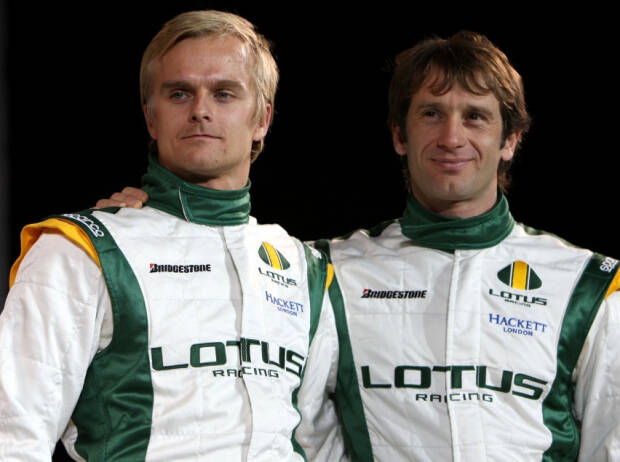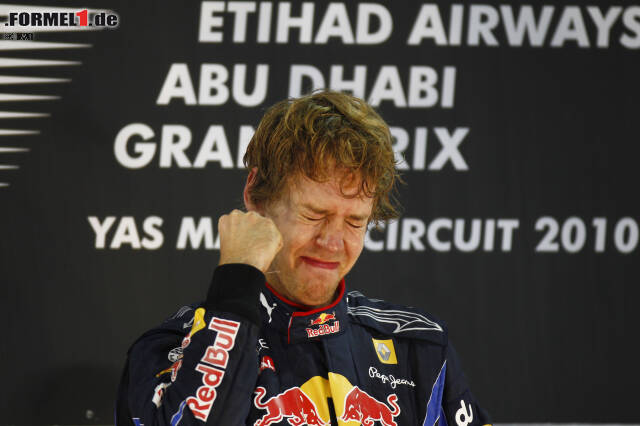(Motorsport-Total.com) – The list of the fastest Formula 1 drivers recently published by Formula 1 in collaboration with Amazon Web Companies and products (AWS) has caused some criticism. Not only that drivers before 1983 weren’t considered, either that with Heikki Kovalainen or Jarno Trulli surprising names in the top 10 stood, respected qualifying experts like Mika Häkkinen or Juan Pablo Montoya did not, raised eyebrows.

© Motorsport Photography
Surprisingly in the top 10: Heikki Kovalainen and Jarno Trulli zoom Compile
Sports director Ross Brawn and technology and data expert Like Smedley are now trying to shed light on and explain how the list of pilots came about. “There were a surprise or two, but if you dive deeper it makes perfect sense,” emphasizes Brawn at ‘formula1.com’ . “There was a lot of discussion, but if you understand the methodology, people will understand.”
The basic plan is that teammates are compared in qualifying: “Same ticket, same scenario, same possibility, “says Brawn. The data is collected all the time, and when a driver changes crew, new data is obtained. If driver A beats driver B in one crew and then beats driver B to driver C in another, then A is logically also faster than C.
And with enough information, you can then create virtual pairings – such as Jean Alesi and Pascal Wehrlein – and calculate who would probably win.
Why Trulli and Kovalainen in the Top 10 are
“You get this complex network of drivers, and with the virtual connections we can build a self-perception level that says something how accurate the connections are on the network, “says Smedley. “It’s not just about the distance between teammates over a season, but also the accuracy is brought in by using the network.”
Photo gallery: Historical study: The 10 fastest Formula 1 driver
A big point of discussion were places eight and nine for Heikki Kovalainen and Jarno Trulli, who together have just five pole positions. Trulli was considered a brilliant qualifier, but according to the former Renault engineer and sports director Steve Nielsen, he was never able to deliver more than five laps in a row. “That’s why he never became world champion”, says Brawn.
But he doesn’t want to criticize the Italian, he just wants to explain why he is so far up on this list. “It’s about the fastest driver, and the fact that some of them weren’t world champions is because their other skill-space wasn’t strong.” This also had an impact on Kovalainen: Because Trulli was so strong in its prime, but was beaten by Kovalainen at Lotus, the Finn is so high up.
Thanks to data analysis: Hülkenberg instant at Mercedes
Brawn even admits that he was Team boss at Mercedes worked with data analysis, and that almost meant that Nico Hülkenberg (twelfth) ended up in the Silver Arrows. “Lewis battle the logical decision after Michael, but we made numerous analyzes of other drivers and then ended up with Nico Hülkenberg,” he says.
Chief strategist James Vowles analyzed Hülkenberg’s entire career – but in the end the driver pairing was Hamilton and Nico Rosberg.
Surer: Why Hülkenberg is not a podium candidate
Marc Surer sees the German comeback neatly as “easy in the first ten” -known person Nico Hülkenberg at the second Big Prix in Silverstone 2020 More Formula 1 videos
In the future, the two of them would also like data from before 1983 to bring Juan Manuel Fangio or Jackie Stewart into the machine. The Inform: These are handwritten and must first be entered. “That can be done, but it is a question of capacity,” said Brawn.
In conclusion, Smedley stresses that this list should in no way be considered definitive and unimpeachable. “It’s about coming up with something that we think is pretty objective,” he says. “It’s about math, physics, data and machine learning – and then discussing and arguing about it.”





0 Comments